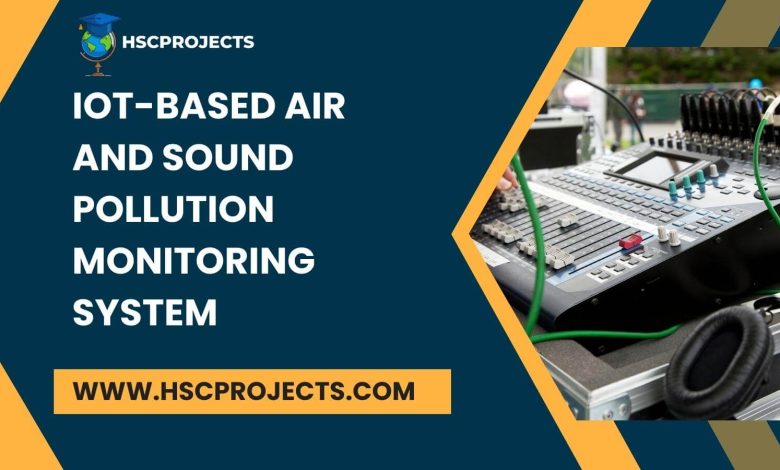
IOT-Based Air and Sound Pollution Monitoring System
Introduction
Air and sound pollution are increasingly becoming a concern for public health and environmental sustainability. Monitoring these pollution levels is crucial for both awareness and action. This article delves into an IoT-based air and sound pollution monitoring system that enables real-time tracking of air quality and noise levels.

System Overview
The system uses a combination of air and sound sensors to collect data, which is then processed by a microcontroller. This data is transmitted to a cloud-based server, allowing for real-time monitoring by authorities. The system is particularly useful for monitoring air quality near industrial areas and noise levels near schools, hospitals, and restricted zones.
Hardware Components
- Atmega Microcontroller: The brain of the system, responsible for data processing.
- MQ 135 Sensor: An air quality sensor for detecting harmful gases.
- Mic Sensor: Measures sound levels in the environment.
- ESP8266 WiFi Module: Enables data transmission over the internet.
- LCD Display: For local display of air and sound quality metrics.
Software Specifications
- Arduino Compiler: For programming the Atmega microcontroller.
- MC Programming Language: C programming is used for system development.
- IOTGecko: A cloud-based platform for IoT data management.
How it Works
- Data Collection: The MQ 135 sensor detects harmful gases, while the Mic sensor measures sound levels.
- Data Processing: The Atmega microcontroller processes the collected data.
- Data Transmission: The ESP8266 WiFi module sends the data to the cloud server.
- Monitoring and Alert: Authorities can monitor data in real-time. Alerts are sent if pollution levels exceed safe limits.
Advantages
- Real-time air and sound pollution monitoring.
- Enables authorities to take immediate action.
- Cost-effective and scalable.
- Easy to install and maintain.
Future Scope
The system can be integrated with machine learning algorithms to predict pollution levels, enabling proactive measures.
Conclusion
The IoT-based air and sound pollution monitoring system serves as an effective tool for environmental monitoring. It not only raises awareness but also aids in taking timely action to improve air and sound quality.
In order to download the PDF, You must follow on Youtube. Once done, Click on Submit
Follow On YoutubeSubscribed? Click on Confirm
Download IOT-Based Air and Sound Pollution Monitoring System PDF






